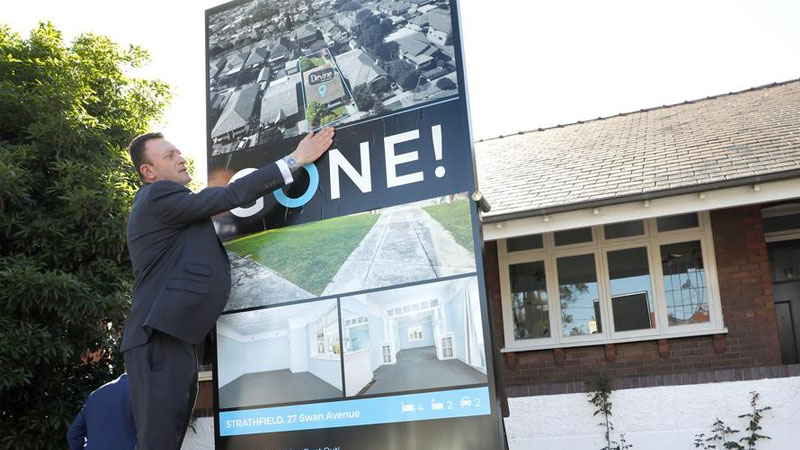Record House Price Growth Forecast for 2020
Property prices in Australia are set to surpass peak levels over 2020 as the robust turnaround across the nation’s biggest markets continues to gather pace.
House prices across capital cities are forecast to surge by up to 8 per cent over the next 12 months, with Sydney and Brisbane leading the way, reveals new research from property platform Domain.
Domain's forecast, which has doubled figures released in June of last year, also expects price growth to remain moderate over 2021.
Sydney, which regained almost two-thirds of the value lost during the 18-month downturn over the last two quarters, has continued to witness positive growth following the markets bottoming out in May of last year.
Sydney house prices are expected to grow at the fastest rate of any capital city, tipped to surge by 10 per cent over the year.
The forecast would push the median price to $1.25 million—5 per cent above the peak reached in June 2017.
Sydney's unit prices are also set to rise by 8 per cent to $795,000, a 1 per cent increase on the peak level reached in 2017.
House price forecasts
| City | Median house price Dec 2019 | 2020 | 2021 |
|---|---|---|---|
| Sydney | $1,142,212 | 10% | 6-8% |
| Melbourne | $901,951 | 8% | 3-5% |
| Brisbane | $577,664 | 8% | 7-9% |
| Perth | $537,013 | 5% | 3-5% |
| Adelaide | $542,947 | 3% | 2-4% |
| Hobart | $530,570 | 3% | 2-4% |
| Canberra | $788,621 | 4% | 3-5% |
Domain economist Trent Wiltshire said low-interest rates and the expectation that interest rates will remain low will be the key drivers of rising property prices in 2020.
“Prices rose rapidly in Sydney at the end of 2019, particularly in higher-priced areas, with this momentum continuing into 2020.”
“Strong population growth, a slowdown in new housing construction, low levels of listings and the First Home Loan Deposit Scheme will also contribute to higher prices.
“Rising market sentiment and a jump in buyer demand, shown by rapid growth in mortgage lending and also more people viewing property listings, will also push up prices.”
Melbourne’s median house price is forecast to rise 8 per cent in 2020 and then by 3 to 5 per cent in 2021.
This will mean Melbourne’s median house price reaches around $970,000 by the end of this year and will hit the $1 million mark by the second half of 2021.
The result, if achieved, would place Melbourne's house prices 10 per cent above the recent peak of $909,000 reached in December 2017.
Unit price forecasts
| City | Median unit price 2019 | 2020 | 2021 |
|---|---|---|---|
| Sydney | $735,387 | 8% | 3-5% |
| Melbourne | $549,701 | 5% | 2-4% |
| Brisbane | $377,549 | 6% | 4-6% |
| Perth | $342,708 | 5% | 3-5% |
| Adelaide | $306,327 | 3% | 2-4% |
| Hobart | $441,104 | 2% | 1-3% |
| Canberra | $455,537 | 3% | 1-3% |
Brisbane house prices are forecast to see strong price growth in the next two years as buyers continue to look beyond Melbourne and Sydney to buy.
“We forecast the median house price to rise by 8 per cent in 2020 and in 2021,” Wiltshire said.
“This follows a period of soft price growth when Brisbane’s house prices rose only 5 per cent in the previous three years.”
After falling almost 10 per cent from the 2016 peak, Domain has tipped Brisbane’s median unit prices to rise by 6 per cent in 2020 then 4 to 6 per cent in 2021.
Hobart’s property price boom, when house and unit prices rose by over 50 per cent between 2015 and 2019, and an astounding 16 per cent last year, is expected to come to an end in 2020.
Hobart is expected to add just 3 per cent this year, in line with Adelaide’s growth expectations while Canberra will put on 4 per cent by Domain’s estimates.

Domain is also predicting an end to Perth’s long-running downturn in 2020 and expects median house and unit prices to rise by 5 per cent by the end of the year.
“Perth is likely to see the fastest price growth since the mining boom ended in 2014, welcome news for those looking to sell.”
“Buyer interest has also risen, with 'views per listing' up 40 per cent over the year and home loan commitments increased 15 per cent between December and March 2019.”
Domain's forecast, reliant on interest rates remaining steady, the economy improving and non-intervention from bank regulator APRA applying potential lending restrictions in order to slow down a runaway housing market.
Wiltshire warned that the ongoing coronavirus pandemic would also have the potential to cause Australia's unemployment rate to rise, with Brisbane and Perth the markets with the most exposure to the Chinese economy.














